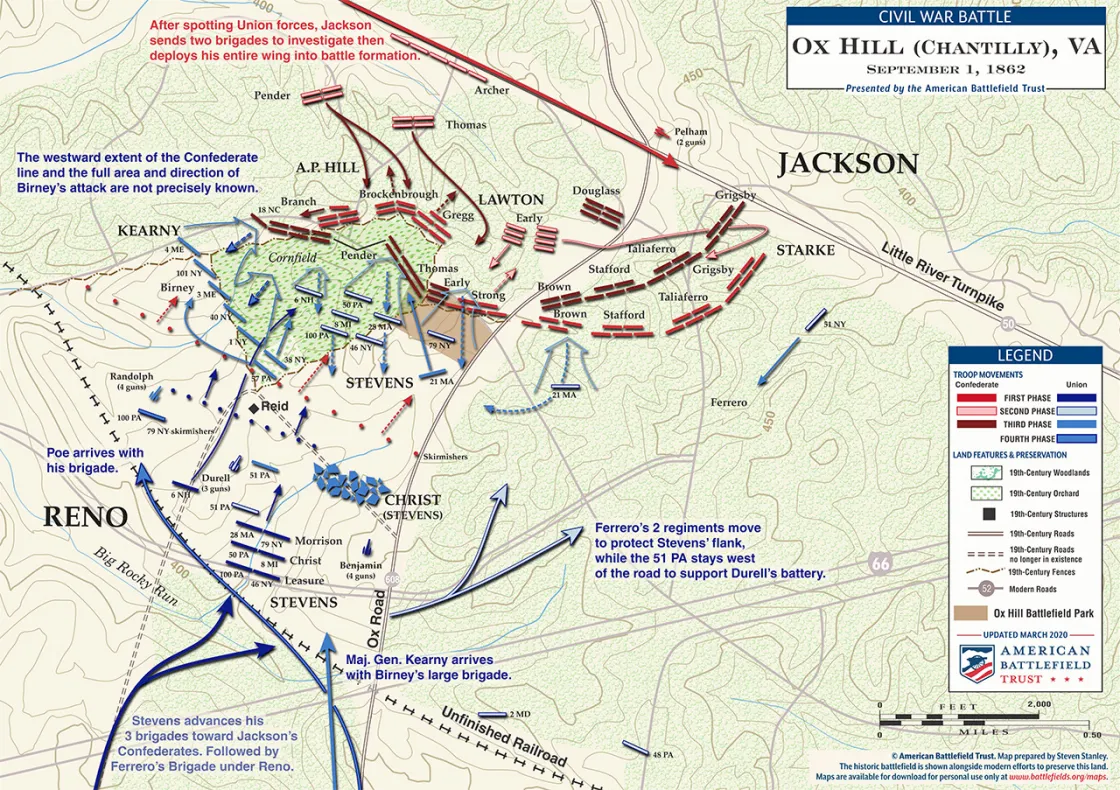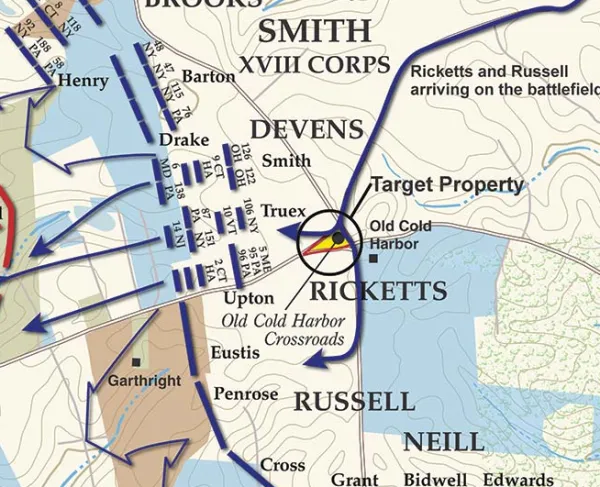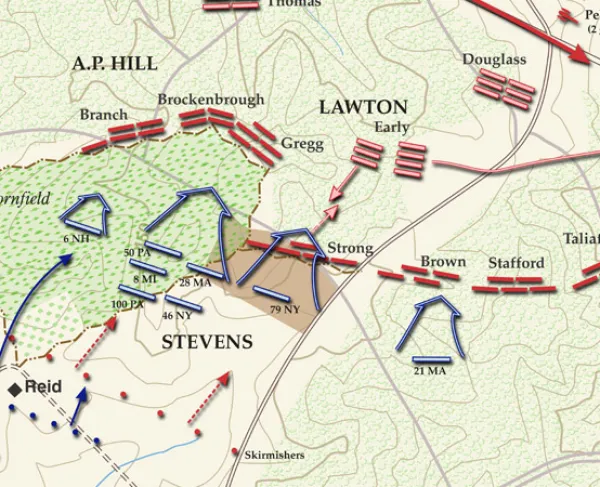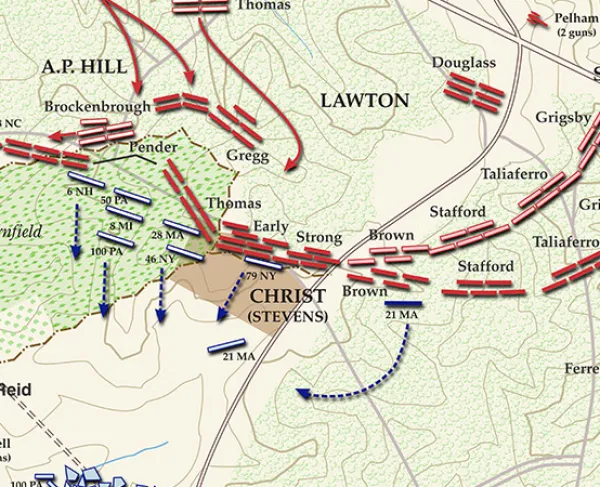Chantilly (Ox Hill) - September 1, 1862
American Battlefield Trust’s map of the Battle of Chantilly (Ox Hill)
Shortly following the Battle of Second Manassas, and flush with victory, General Robert E. Lee ordered Stonewall Jackson on a wide flank march in hopes of cutting off the retreating Union Army. On September 1, beyond Chantilly Plantation on the Little River Turnpike near Ox Hill, Virginia. By the early afternoon of September 1, General John Pope was aware of Jackson’s threat to his flank and line of retreat. After dispatching a force under the command of Joseph Hooker to secure Jermantown, Pope ordered the IX Corps division of Brig. Gen. Isaac Stevens to advance west along the Little River Turnpike to establish a forward defensive position. Stonewall Jackson, who had allowed his men to rest after the taxing marches of August, and the pitched battle of Second Manassas, received reports of Federals in his immediate vicinity. Near 4 p.m., Jackson dispatched a reconnaissance force to ascertain the enemy’s strength and intentions. Meantime, General Stevens deployed his Federals into a line of battle. Pressing two companies of his old regiment, the 79th New York Highlanders, forward as skirmishers, Stevens arrayed the remainder of his forces into a battleline. Amid a rainstorm, and in an attempt to clear the Little River Turnpike of Confederates, Stevens ordered his units forward. The Federals marched into the jaws of elements of three Confederate divisions. With his assault foundering, Stevens seized the flag of the 79th New York and urged the men forward. As he leaped over a fence, a Confederate bullet struck Stevens in the head, killing him instantly. Enraged, the Federals surged forward, breaching the Confederate position. The Union breakthrough was shortlived.
A lull in the fighting came across the field, as the rainstorm turned into a severe thunderstorm. Jackson took the time to reinforce and redeploy his men. This was a prudent decision on Jackson’s part, as more Federals were marching toward his position. General Philip Kearny’s III Corps division started in support of Stevens before the latter’s death. Kearny’s men engaged with Jackson’s right flank. Outnumbered, Kearny rode off in search of support, but none was close at hand. Riding to the front, the one-armed Kearny found himself in the midst of a thunderstorm, and face-to-face with Col. Edward Thomas’ Georgia brigade. Kearny wheeled his horse around as the Confederates called for his surrender. Shots rang out and Kearny was felled by a Rebel bullet that entered his hip and exited out of his shoulder. The general was dead before he hit the ground.
With two leaders killed in action, and a severe thunderstorm raging, the Battle of Chantilly came to an end. With Union forces in disarray, Lee grasped the opportunity to lead his army across the Potomac into Maryland for its first incursion into the North.
Learn More: The Battle of Chantilly






